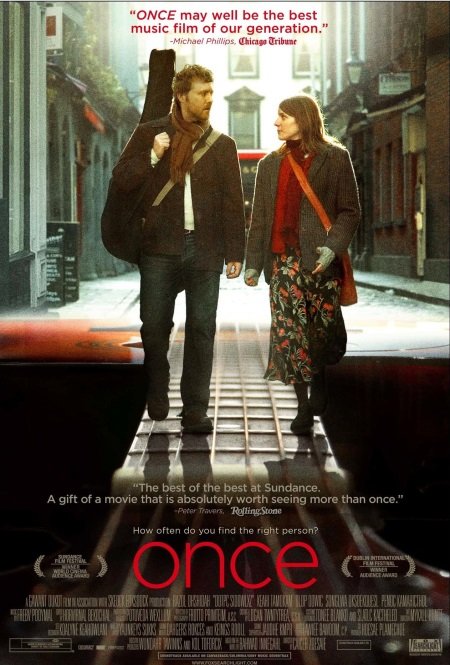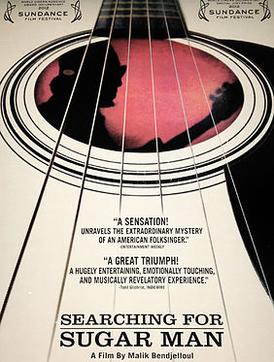 Despite the corny HolloWood ending, I think that this is an incredible movie about the spirit of music.
Despite the corny HolloWood ending, I think that this is an incredible movie about the spirit of music.
Tag Archives: authentic
Black Swan (2010)
 Adding this title to this list came with a small debate. A big portion of it is a psychological thriller; its also about an artist making a personal break-through into a different area of their craft. Someone else might call me a dufass saying I missed the point entirely — and maybe I did, but the film is also subjective. To me, it had something to say about working within an art form that has an exacting/purist community surrounding it and breaking through … and that for me is the greatest point of the film.
Adding this title to this list came with a small debate. A big portion of it is a psychological thriller; its also about an artist making a personal break-through into a different area of their craft. Someone else might call me a dufass saying I missed the point entirely — and maybe I did, but the film is also subjective. To me, it had something to say about working within an art form that has an exacting/purist community surrounding it and breaking through … and that for me is the greatest point of the film.
DIY or DIE: How To Survive as an Independent Artist (2002)
 If you’re an independent artist of any type, you’ll want to see this. At the beginning of the piece the film-maker states his point to project & what he wanted to explore — and over the course of the film I don’t feel that his interviewees proved, represented or developed his point … at all. However, the interviewees speak a lot about the passion behind their work and doing it successfully their way regardless of what “The Industry” indicates.
If you’re an independent artist of any type, you’ll want to see this. At the beginning of the piece the film-maker states his point to project & what he wanted to explore — and over the course of the film I don’t feel that his interviewees proved, represented or developed his point … at all. However, the interviewees speak a lot about the passion behind their work and doing it successfully their way regardless of what “The Industry” indicates.
DIY or DIE at IMDB and Wikipedia
NOTE – The full title of this film is DIY or DIE: How To Survive as an Independent Artist (AKA DIY or DIE: Burn This DVD)
Once (2007)
 I found out about “Once” while watching extras to the film Begin Again. Once was written & directed by the same director — John Carney — and stars Irish musician/actor Glen Hansard and Czech musician/actress Markéta Irglová.
I found out about “Once” while watching extras to the film Begin Again. Once was written & directed by the same director — John Carney — and stars Irish musician/actor Glen Hansard and Czech musician/actress Markéta Irglová.
Usually when I make note of a music-related film it’s because I strongly related to it relative to music — it struck a chord (no pun intended) in me, it spoke to me about the experience and the inexpiable thing that is music … this one is hard to write about. More than anything I think for me this film speaks to me because of the busking and because of the from-the-core music of the male lead, played by Irish musician/actor Glen Hansard.
Frankly, it’s difficult to write about because I missed about 15 minutes of the film about 1 hour in — the DVD sketched out, which is a typical problem with films I get from the library. From what I could tell visually I predict that there were important elements to the story line, especially having to do with the ending. It was very disappointing and I’d like to get my hands on a non-blemished copy so I can get the full story. I liked that the film was shot hand-held — it made it feel human, that you were with the guy & gal leads having their experience. Which is another thing … I didn’t realize until I saw the credits that they never have names in the film — as listed in the credits, they are “guy” & “girl”.
Maybe the two areas where this particularly spoke to me …
- One, it was shot on the streets of Dublin. I’ve barely spent four days there, but places were familiar. I particularly recognized parts around the Temple Bar area, and know that a lot of famous performers out of Ireland have come from there. Despite aspects that didn’t register well with me — that it’s a tourist town with too many poor mannered American college kids, and there are a lot of immigrants and it was hard to find Irish people in Dublin/Ireland — I no less came away knowing that I wanted to return and see more of not just the city but the country.
- Two, I identified with this film from the standpoint of being a broke musician — dealing with the challenges that come with trying to survive, trying to live your passion (music), and trying to keep your music supported financially when you are struggling to pay rent and for food.
Also, similar to what I got out of Begin Again, I think this film spoke to me about going for it with your music — being venerable with your art and releasing every inhibition to touch the depth of each emotion present in a tune, in a song, and playing it despite judgment, despite an audience, and regardless of what stage you’re on.
Ultimately, about this film, I can’t put my finger on why I’m writing about this one or its importance why a musician or non-musician should see it — but there is something about it that I can’t let it go without note, it touches something inexpiable which is a huge part of music itself. This film is not just a story, it’s not just a vignette of drama, it does not fall into the ranks of ‘just a music film’ as it is music itself.
I think it’s fair to say that there are some common threads that go through this film that also go through Begin Again, and given how I responded to Begin Again maybe that’s why I respond to its predecessor Once.
PS – I essentially just watched the film a second time. Without giving anything away, there is an element to the ending – perhaps a few, but one in particular – that to me is beautiful, it is subtle yet it is powerful, it is joy and it is balance. You might & you might not see it; it may be a musician thing. If you don’t see it, that’s okay.
Glen Hansard at IMDB, Wikipedia, and his Official Website
Markéta Irglová at IMDB Wikipedia and her Official website
Searching for Sugar Man (2012)
“Searching for Sugar Man” is the unbelievable-but-true story of an iconic musician who did not know he was famous. While the artist’s music was influential, he seemed to have never existed.
Yeah – you read that right.
This story begins in Detroit, 1968 …
One night in 1968 Detroit, two renowned producers — Mike Theodore and Dennis Coffey — intentionally went to a back-alley bar. They wanted to hear a rumored musician known as Sixto Rodriguez. He played and they listened. So impressed with his craft, they quickly offered him a recording deal. To their surprise, when his first albums were released in 1970 and 71 … they tanked!
 As the singer / songwriter faded into obscurity, bootleg recordings of Sixto Rodriguez’s album found their way around apartheid South Africa. Here, unbeknownst to him, over the following two decades his music became a cultural phenomenon — but no one knew who the artist was…
As the singer / songwriter faded into obscurity, bootleg recordings of Sixto Rodriguez’s album found their way around apartheid South Africa. Here, unbeknownst to him, over the following two decades his music became a cultural phenomenon — but no one knew who the artist was…
“Searching for Sugar Man” gives the account of two Cape Town fans in the late 1990s endeavoring to solve the mysteries surrounding their hero.
LINKS
- Searching for Sugar Man at IMDB
- Searching for Sugar Man at Wikipedia
- Sixto Rodriguez at Wikipedia
- Cold Fact (1970)
- Coming From Reality (1971)
- Searching for Sugar Man at Sony
- Sixto Rodriguez at Sony
NOTE – Dennis Coffey and Mike Theodore also worked with Marvin Gaye, Stevie Wonder, The Temptations, The Supremes, Gladys Knight, Ringo Starr, The Four Tops, and Wilson Pickett, among others. Yeah, these guys are no joke. Also, this film does not draw attention to the fact that Sixto Rodriguez did get attention in Australia. The film receives some criticism for this, suggesting that it is ‘myth building’. The argument against the criticism is that the film is not attempting to build a story about the artist; instead its purpose is to tell the story of the two fans and their search into the history of this artist.
